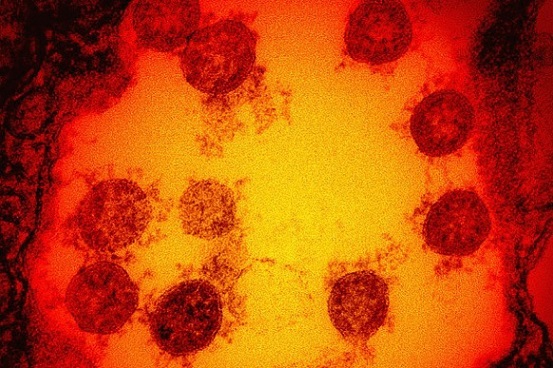Researchers from California Warn That Viral Leftovers of SARS-CoV-2 Are Driving Long COVID
Nikhil Prasad Fact checked by:Thailand Medical News Team Sep 16, 2025 3 months, 3 weeks, 1 day, 13 hours, 27 minutes ago
Medical News: A Global Health Crisis with No Clear Answers
Long COVID, also known as post-acute sequelae of COVID-19 (PASC), is a chronic condition that continues to puzzle doctors and scientists worldwide. It affects more than 420 million people across the globe, including children, teenagers, and previously healthy adults. In the United States alone, an estimated 10 to 20 million people are struggling with lingering symptoms such as breathlessness, heart problems, fatigue, brain fog, anxiety, and depression. Despite the enormous burden, there are still no approved diagnostic tests or treatments. According to this
Medical News report, researchers are now pointing to hidden virus reservoirs and components of the virus inside the human body as a major factor behind these prolonged illnesses.
 Researchers from California Warn That Viral Leftovers of SARS-CoV-2 Are Driving Long COVID
The Study and Institutions Behind It
Researchers from California Warn That Viral Leftovers of SARS-CoV-2 Are Driving Long COVID
The Study and Institutions Behind It
The study was carried out by scientists from the Laboratory of Cellular and Molecular Immunology at the Gavin Herbert Eye Institute, University of California Irvine School of Medicine, the Department of Pathology and Laboratory Medicine at the University of California Irvine, the Institute for Immunology at UC Irvine, and TechImmune LLC’s Department of Vaccines and Immunotherapies. Together, the researchers examined how remnants of SARS-CoV-2—the virus that causes COVID-19—may persist long after the initial infection seems to have cleared.
Virus and RNA Hiding in the Body
The researchers reviewed growing evidence that fragments of the virus or its genetic material (viral RNA) can remain hidden in multiple organs, sometimes for months or even years. These viral leftovers have been found in the lungs, gut, appendix, skin, brain, and even the tonsils of children. In some cases, these reservoirs were detected more than a year after the patient’s original infection. Rather than lying dormant, these viral elements appear to constantly stimulate the immune system, creating low-grade but chronic inflammation. This not only damages tissues but also exhausts important immune cells like CD4+ and CD8+ T cells, leaving the body in a weakened state.
The Role of Spike Protein and Other Antigens
Beyond whole virus particles, persistent fragments such as the Spike protein and Nucleoprotein have also been identified in blood and tissues. In some patients, Spike protein was found in the brain’s protective layers and gut lining even two years after infection. Such persistence could explain why neurological problems like brain fog, headaches, and memory issues remain common in Long COVID patients. Scientists believe these proteins may serve as “biomarkers,” helping to detect ongoing viral activity and possibly guiding future treatments.
Why This Matters
The findings underline the seriousness of Long COVID and the challenges in tackling it. If hidden virus or viral leftover reservoirs are indeed driving chronic illn
ess, future therapies may need to go beyond symptom control and instead focus on flushing out these viral remnants. This could involve antiviral drugs, immune-based therapies, or even new vaccines designed to target lingering viral proteins. For now, however, more research is needed to confirm how exactly these reservoirs form, why they persist, and how they lead to such a wide range of debilitating symptoms. The study findings were published on a preprint server and are currently being peer reviewed.
For the latest on Long COVID, keep on logging to Thailand
Medical News.
Read Also:
https://www.thailandmedical.news/news/taiwanese-scientists-warn-that-hidden-spike-proteins-drive-long-covid-risks-and-lasting-inflammation
https://www.thailandmedical.news/news/romanian-study-finds-that-micrornas-are-hidden-players-driving-long-covid-damage
https://www.thailandmedical.news/news/s1-spike-protein-of-covid-19-virus-triggers-neuron-death
